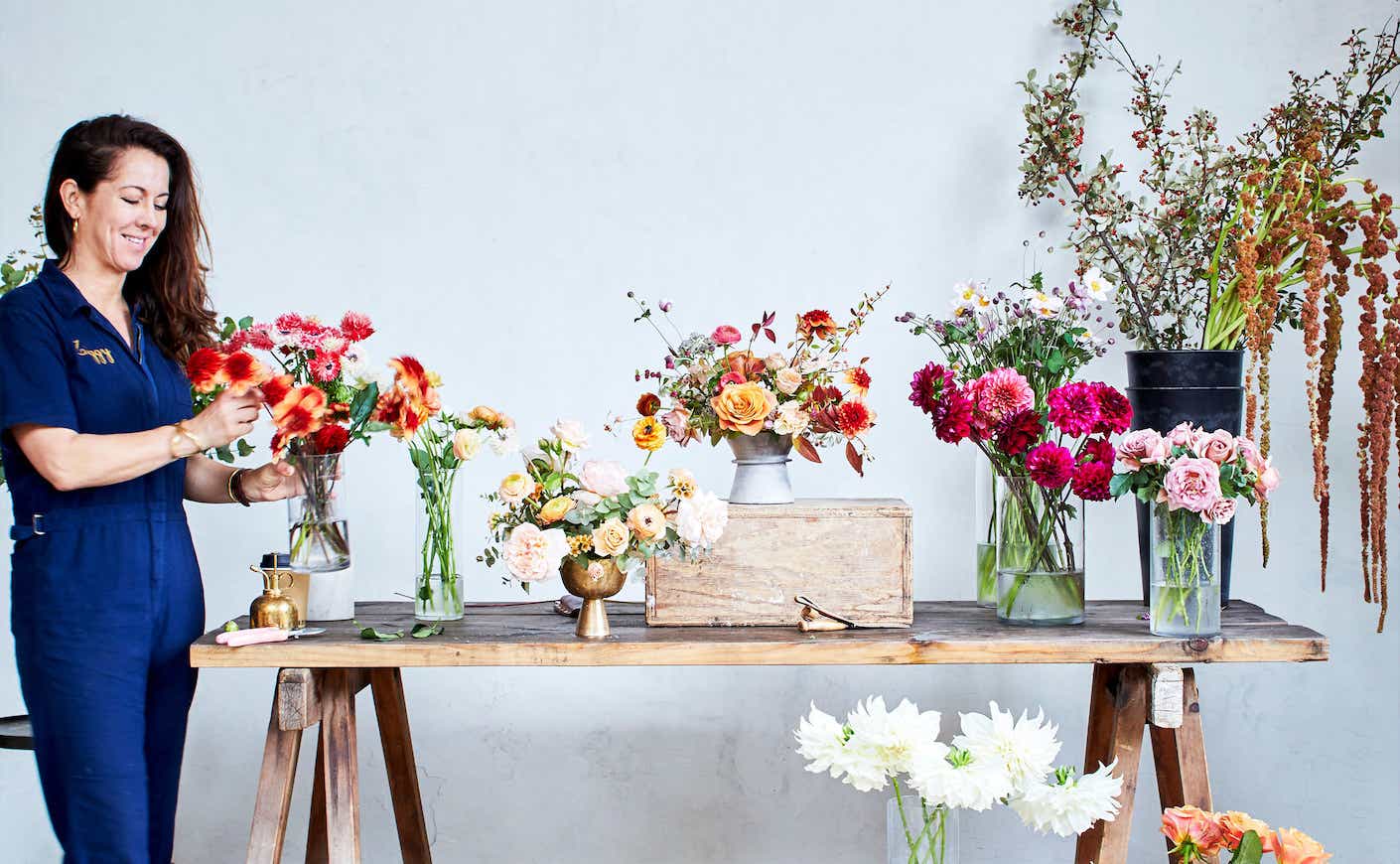If you’ve enjoyed Katie’s Instagram stories featuring her lush garden, you know she’s got a knack for flower arranging. But almost everything she knows she learned from Ellie’s wedding florist Ingrid Carozzi — of Brooklyn’s Tin Can Studios. Eager to share this wisdom with flower-loving friends and loyal readers, Katie did a live event with Carozzi in 2022 about this art form.
These aren’t the standard wedding centerpieces of equal-length white roses that stick upward in a tall, thin vase. While there’s absolutely nothing wrong with that traditional look (it’s popular for a reason!), Carozzi’s style is — in her own words — painterly. Think bright, contrasting colors and varying textures and heights. The result is a show-stopping burst of color that seems to overflow from the vase without looking messy or unkempt. Plus, Carozzi cuts down on waste by using tools that do away with the need for floral foam. Since foam isn’t a very sustainable material, we’re pretty pumped to learn about alternatives.
We seriously recommend you watch the entire live tutorial to get a thorough walkthrough, especially if you’re a visual learner. However, if you’re low on time, we’ve pulled some of Carozzi’s most useful tips and tricks so that you can still join in on the fun. With just some chicken wire, a flower frog, a bit of tape, and your favorite vase or bowl (here’s one of our favorites), you can start on your own floral journey. You can use your new skills to decorate for parties, arrange thoughtful gifts, or brighten your space as an exquisitely beautiful form of self-care. And if you need a dose of extra inspiration, check out Ellie’s breathtaking wedding trellis.
Ingrid Carozzi’s Essential Flower Arranging Tips
Secure your stems with a flower frog: “A flower frog is one of the best tools to have if you want to work with flowers because it holds your stems in place. You can move them around or back and forth. But be careful with your flower frog — it’s sharp.”
Use chicken wire and floral tape instead of foam: “Chicken wire will help hold the flowers in place. Create a little ball of chicken wire and put it on top of the frog. That way, we have two things that are supporting our flowers. Use floral tape to secure the chicken wire to your vase. Cut two strips of tape and place them on top of the chicken wire in the shape of an X to hold the chicken wire still.”
Water 101: “Fill the vase or bowl with water all the way up to the edge. Rewater consistently, especially the day after you’ve made the arrangement because they drink the most on the first day. The harder the stems, the warmer the water can be. If your flowers are sort of wilting, I always suggest flipping them upside down and then wrapping them with tissue paper — like a cast. Basically, give them a fresh cut and then put them in water.”
Only allow stems in the water: “Make sure there’s no foliage underneath the water line when you’re making your arrangement — the leaves will quickly rot, which will shorten the life of your arrangement.”
Have fun with asymmetry: “The way I describe our arrangements is like a book with different chapters. So if you’re moving around and looking at the arrangement, there are different stories within the same arrangements.”
Work with the flowers, not against them: “Sometimes you need to let the flower go where it wants to go. Usually, I look at the flower, see how it’s tipping and then I let it do that in the base.”
Replace flowers when they start to wilt: “Notice some individual flowers are starting to die? Don’t dump the entire arrangement. You can replace individual flowers in your arrangement as needed.”












